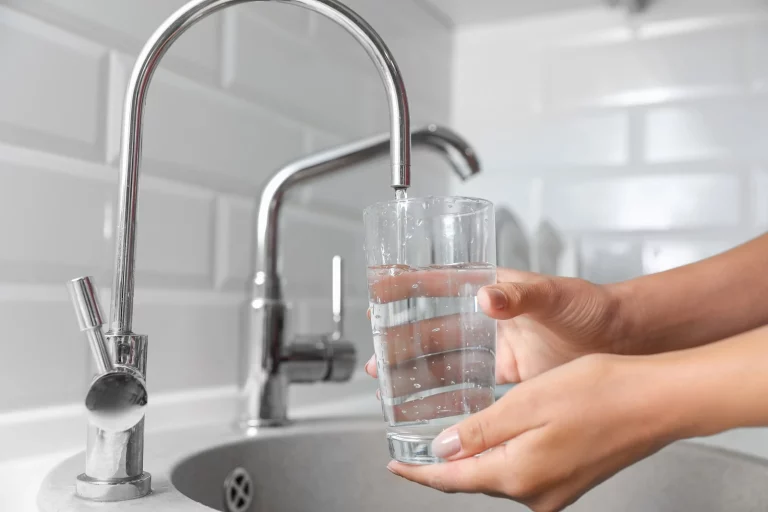Providing clean drinking water for your family is very important. With pollution making many water sources unsafe, finding a good way to filter your home’s water is extremely necessary.
Studies show billions of people worldwide drink water contaminated with sewage, which causes serious illnesses. But don’t be too concerned, because you can install under sink water filters that effectively remove contaminants.
The Importance of Clean Drinking Water
Recent data from Edition CNN reveals alarming pollution levels in many drinking water sources globally. This highlights the need for access to clean, safe drinking water. Consuming untreated or unfiltered water exposes people to hazardous diseases posing grave health risks.
Installing an effective water filtration system at home helps mitigate these risks substantially. Such systems filter out dangerous contaminants, delivering purified, pathogen-free water. Prioritizing clean drinking water access through solutions like filtration is paramount for protecting family health and well-being worldwide.
The Different Types of Under Sink Filters
Under sink filters come in various categories and systems, each engineered to target diverse types of contaminants in your water supply. The most common types encompass activated carbon filters, ceramic filters, ultraviolet disinfection units and yes, even reverse osmosis. Each type has its own unique mechanism and offers amazing benefits but choosing one depends largely on your needs and concerns.
Kraus water filter faucets are an essential component in fortifying your household’s defense against waterborne diseases, ensuring clean drinking water directly from your faucet and safeguarding your family’s health.
Activated Carbon Filters
Activated carbon filters are among the most prominent types of under sink filters because of their simplicity and affordability. They work by trapping impurities in the filter’s porous surface, effectively removing chlorine, sediment, volatile organic compounds (VOCs), and bad tastes and odors from your water.
Ceramic Filters
Their unique design makes ceramic filters incredibly efficient to eliminate bacteria and cysts, which can cause serious illnesses. The physical filtration process involves tiny pores in the ceramic material that trap these harmful microorganisms, making ceramic filters a recommended choice if you suspect bacterial contamination in your water.
UV Disinfection Units
What about viruses? Well, ultraviolet (UV) disinfection units are superb at targeting these nefarious invaders. Installed under your sink, they utilize UV light to knock out bacteria and viruses by damaging their DNA – an ideal solution if your primary concern is microbial contaminants. To read more about it visit this blog.
Pros and Cons of Under Sink Water Filters
When looking at under-sink water filters, we should thoughtfully weigh both the potential advantages and drawbacks. An important benefit is that they can provide filtered water right from your faucet, improving convenience and access.
However, there are many factors to consider compassionately when evaluating filtration options – like safety, cost, ease of use, and how well they remove contaminants. By having an open and caring dialogue about the pros and cons of different systems, we can better understand what solutions meet community needs in ethical, effective ways
Nature of Installation
Each under sink water filter has a distinct installation process that requires connecting it directly to your cold-water line. While many homeowners opt for professional installation to ensure accuracy and reliability thus avoiding future issues with leaks or system failures it’s also feasible to install it yourself provided you strictly follow the manufacturer’s instructions.
Maintenance of Under Sink Filters
Just like any mechanical system, an under-sink water filter requires regular maintenance to ensure its longevity and efficiency. This primarily involves changing the filters at the recommended intervals, which can vary depending on the specific model and quality of your water. Neglecting to replace your filters not only reduces the system’s effectiveness but can also lead to bacterial contamination.
5 Stage Reverse Osmosis Systems
A 5 stage reverse osmosis system represents a cutting-edge under sink filter technology designed to eliminate up to 99.99% of contaminants from your water – including bacteria, viruses, heavy metals, nitrates, chlorine, and many more.
It employs a step-by-step mechanism that includes pre-filter stages where dirt particles are removed, a reverse osmosis membrane that hinders any remaining impurities, and a post-filter stage that gives a final “polishing” to your water before it reaches your glass.
Cost Implications
The cost of under sink filters can range from below one hundred dollars to several hundreds or even over a thousand dollars with this variance attributable to factors such as the type of filter media used, the number of filtration stages and the overall quality of manufacturing amongst others.
In addition investing in an under-sink filtration system often involves further expenditure such as installation costs and routine filter replacement – essential considerations while evaluating your budget.
Concluding Thoughts
You have the power to safeguard your family’s health by ensuring clean drinking water right at your home. By understanding the significance of under sink filters and choosing the right one befitting your exclusive needs you can fortify your household against potential waterborne diseases. Secure their health today!

